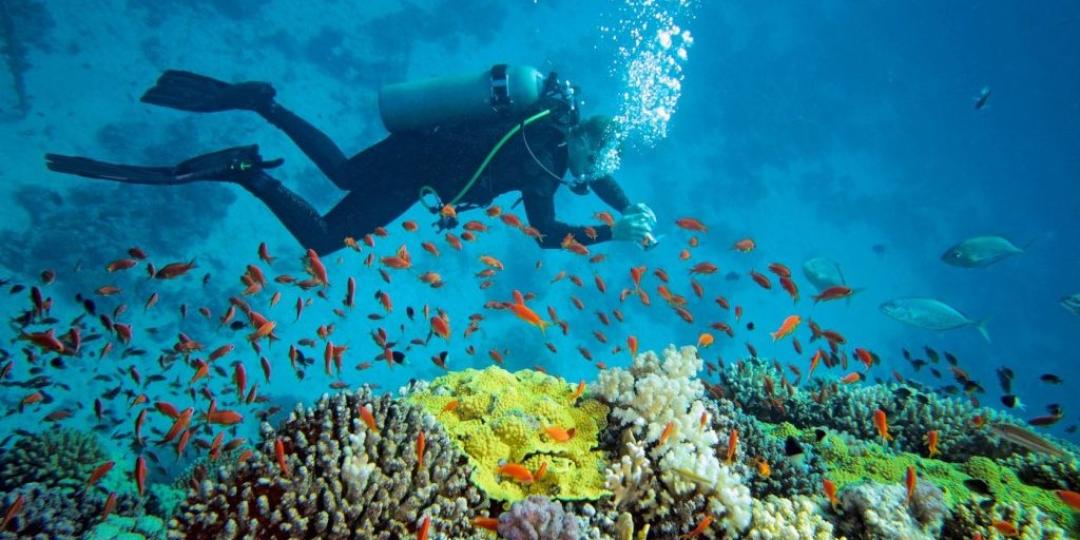Marine tourism in southern and East Africa has significant potential for growth and development, as the region's rich biodiversity and unique underwater landscapes offer experiences for marine tourists that set it apart from other destinations in the world.
So said Christine Macharia, Sales and Marketing Executive at inbound destination management company, Sense of Africa, East Africa.
“There has been a global trend towards adventure and experiential tourism, with travellers seeking unique and immersive experiences. Marine tourism offers opportunities for adventure seekers to explore underwater worlds, encounter marine wildlife, and engage in activities like diving with whale sharks or swimming with dolphins.
“East Africa is home to some of the world's most diverse marine ecosystems, including coral reefs, marine parks, and protected areas. Countries like Kenya, Tanzania, Mozambique, and Madagascar boast a wealth of marine life, including colourful coral reefs, whale sharks, dolphins, turtles, and various species of fish.”
The global coastal and maritime tourism market size was estimated at US$2.9 trillion in 2021, and is expected to expand at a compound annual growth rate of 5.7% from 2022 to 2030, according to Grand View Research, Inc.
Ocean Adventures, which offers ocean safaris, whale-watching tours and dolphin encounters in Plettenberg Bay in South Africa’s Garden Route, told Tourism Update that marine tourism was one of the fastest growing sectors in tourism, and that it expected the niche market to grow even more in the future.
Growth in East Africa
Macharia said many countries in East Africa had been investing in infrastructure development to support tourism, including the construction of marinas, resorts, dive centres, and the establishment of tour operators.
She said Zanzibar had been investing in infrastructure development and promoting marine tourism activities, while Kenya had been focusing on promoting coastal tourism and sustainable marine conservation efforts.
“Governments and tourism boards in East Africa have been actively promoting its marine tourism offerings through marketing campaigns, trade shows, and digital platforms. Efforts to raise awareness about the region's marine attractions help attract more tourists interested in coastal and underwater experiences,” Macharia added.
Another major aspect of the marine tourism sector is cruise tourism, which Macharia noted had been growing rapidly on a global scale, with East Africa now well positioned to capitalise on this growth.
“East Africa's coastline is increasingly becoming a destination for cruise ships. Ports like Mombasa in Kenya and Dar es Salaam in Tanzania are attracting cruise liners, contributing to the growth of marine tourism in the region.”
She further added that, in addition to its natural beauty, East Africa's coastal regions were rich in cultural heritage and historic significance.
“Destinations like Zanzibar's Stone Town, Lamu in Kenya, and the Swahili coast offer opportunities for cultural immersion, historical tours, and culinary experiences that complement the marine tourism offerings.
“A good number of marine tourists also like to combine bush and beach experiences and, most especially, those on special holidays like honeymoons or the celebration of anniversaries, among others.”
Appeals to a wide range of traveller segments
Macharia believes that marine tourism appeals to a wide range of traveller segments, although certain groups may show a higher level of interest due to their preferences, interests, and values.
She said that the following traveller groups were often particularly interested in marine tourism:
- Millennials and Gen Z: Younger generations, including Millennials (born between 1981 and 1996) and Gen Z (born between 1997 and 2012), are often drawn to experiences that offer adventure, environmental sustainability, and opportunities for unique and Instagram-worthy moments. “Marine tourism aligns well with these preferences, offering activities such as snorkelling, diving, and boat cruises that provide immersive experiences in nature.”
- Adventure seekers: Travellers who seek adventure and outdoor activities are often attracted to marine tourism. “Activities like scuba diving, surfing, and swimming with marine wildlife offer adrenaline-pumping experiences and opportunities to explore the natural world in a dynamic and engaging way.”
- Nature and wildlife enthusiasts: Those who have a passion for nature and wildlife are often interested in marine tourism due to the opportunity to observe marine life in its natural habitat. “Snorkelling among coral reefs, swimming with dolphins, and observing sea turtles nesting are experiences that appeal to travellers who appreciate the beauty and diversity of the natural world.”
- Conservation-minded travellers: Travellers who are environmentally conscious and prioritise sustainable tourism practices may be particularly interested in marine tourism activities that promote marine conservation and responsible tourism. “Many marine tourism operators offer eco-friendly experiences, such as reef-friendly sunscreen policies, marine wildlife conservation projects, and educational programmes about marine ecosystems and conservation efforts.”
- Families and multi-generational travellers: Marine tourism can be enjoyed by travellers of all ages, making it a popular choice for families and multi-generational groups. “Activities like snorkelling, glass-bottom-boat tours, and beach picnics appeal to travellers of different ages and interests, providing opportunities for shared experiences and lasting memories.”
Threat of over-tourism
Macharia did, however, caution that overtourism posed a potential threat to marine tourism.
“Overtourism in the marine tourism market poses a threat in terms of environmental degradation; crowding and stress on marine wildlife; degradation of visitor experiences; strain on local infrastructure and resources; and social and cultural impacts.”
She concluded that Sense of Africa, East Africa ensured best practices and sustainability in its marine tourism offerings through environmental education and awareness; partnerships with sustainable operators; promotion of sustainable activities; compliance with set regulations and standards; and reduction of environmental impact.























